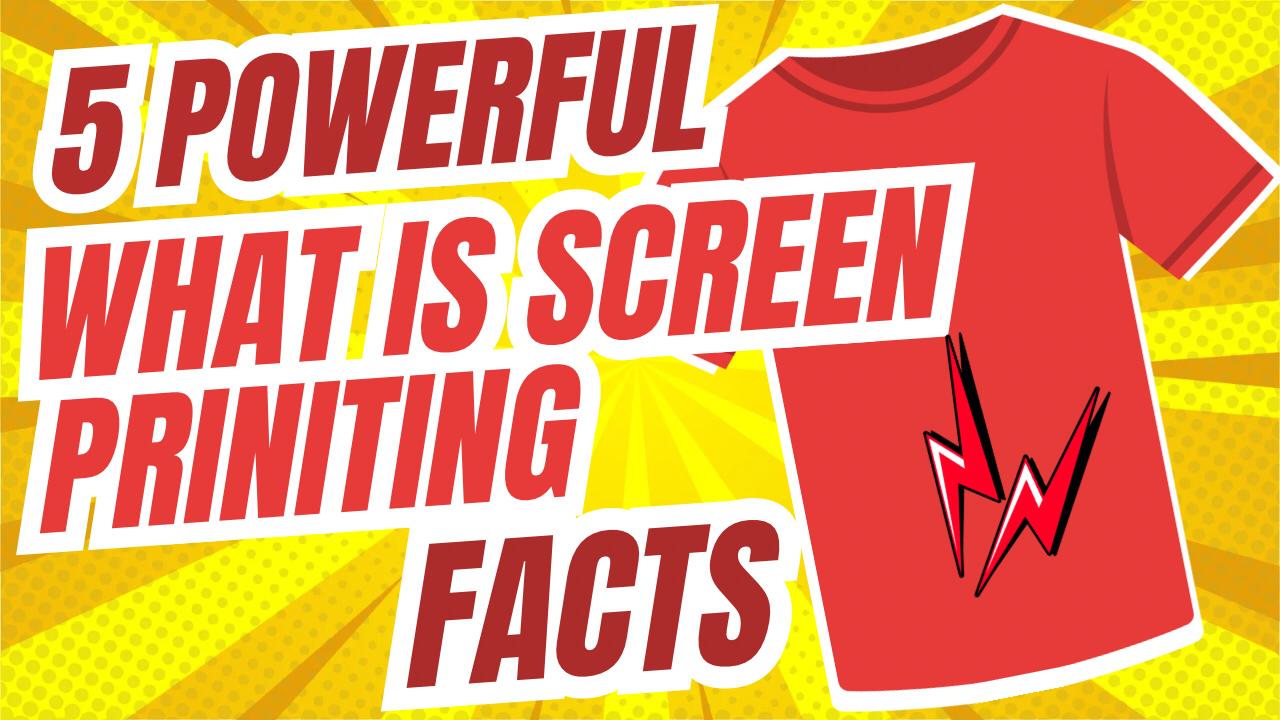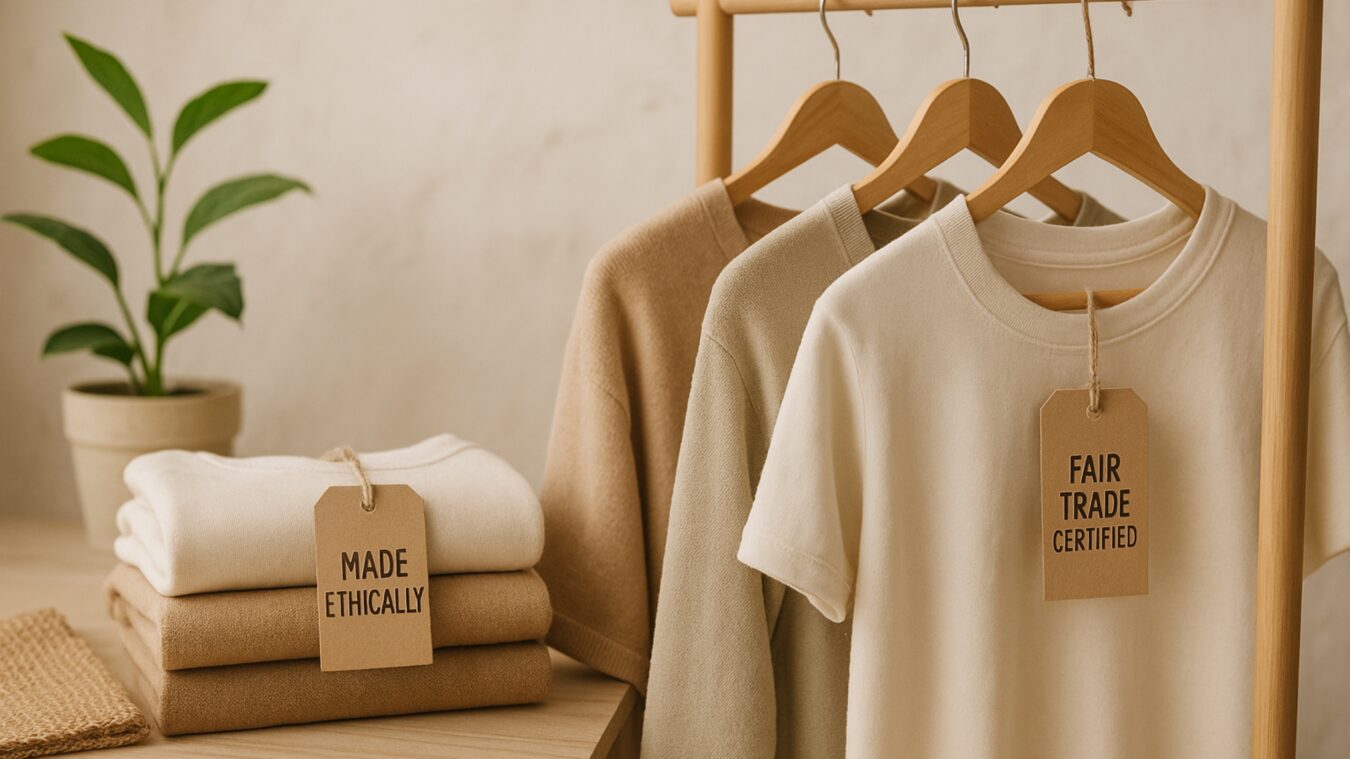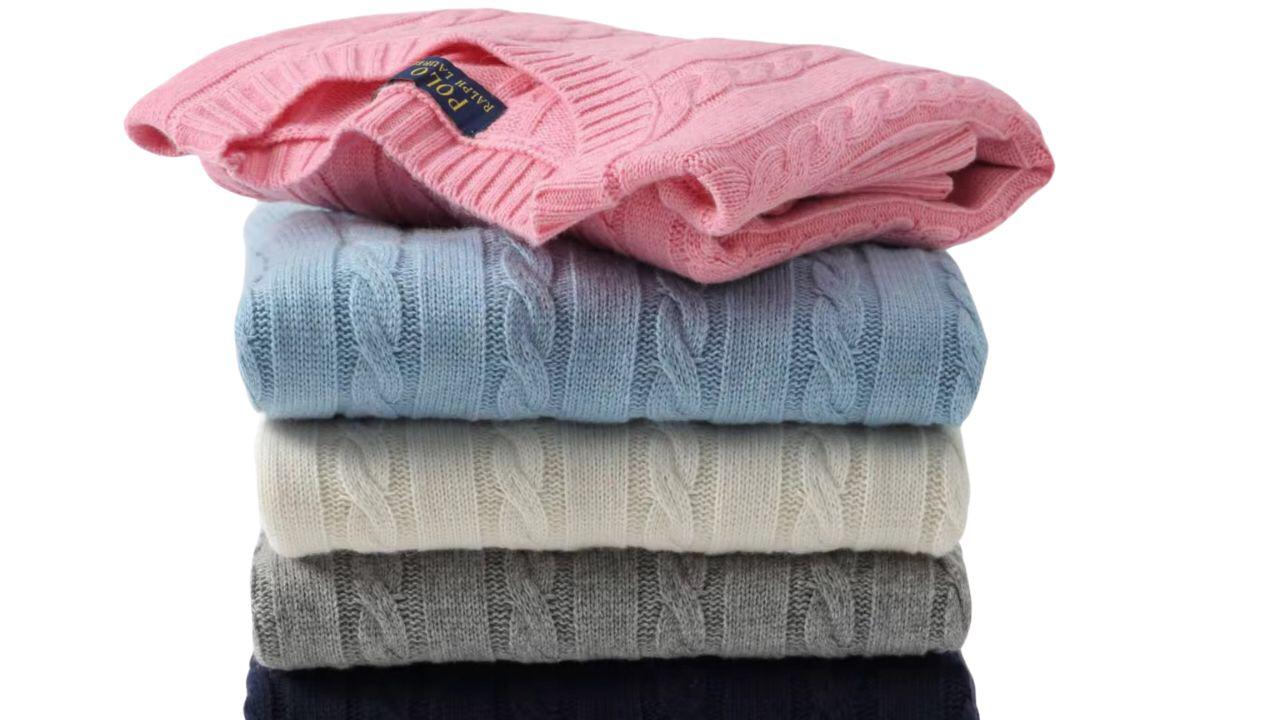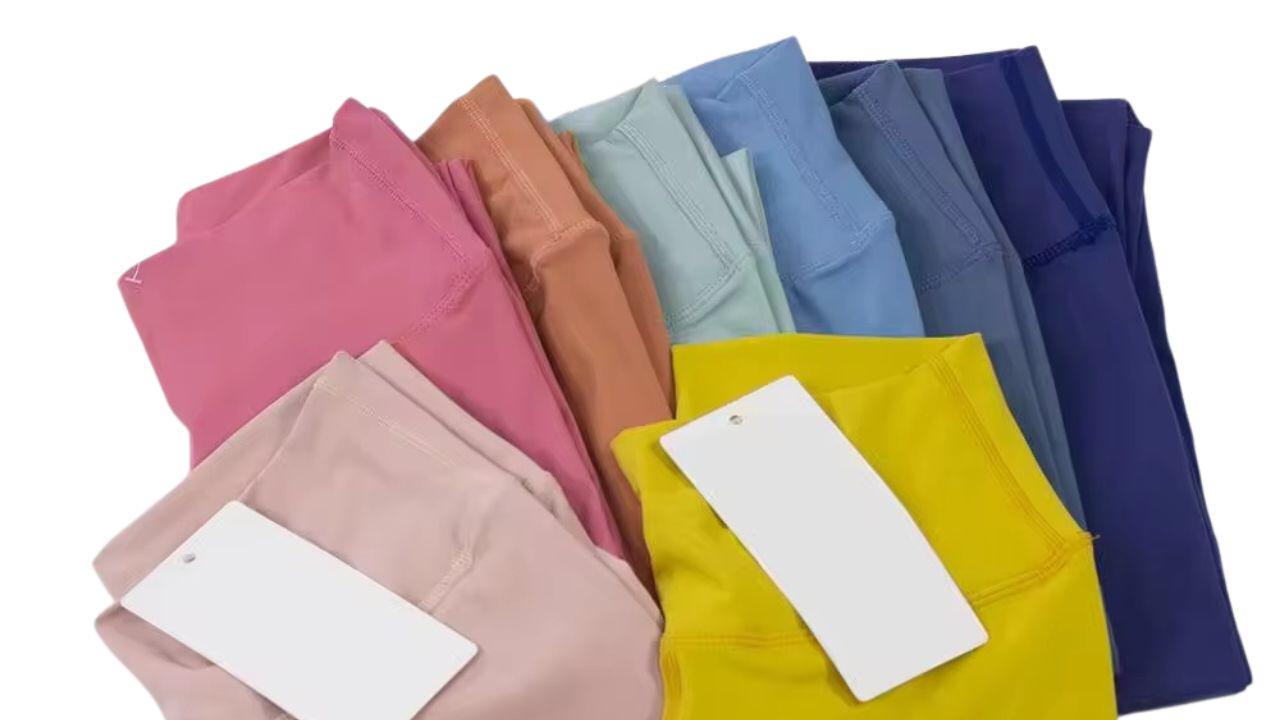Screen printing is a popular technique for applying designs to various surfaces by forcing ink through a fine mesh that is stretched across a frame.The fabric of the screen has a stencilled design, where certain areas are blocked and impervious, so only the intended image passes through. This process is commonly used on canvases, posters, artwork, fabrics, and textiles. Traditionally, the mesh was made of silk, but modern screens are made from synthetic materials like terylene, supported by metal or wooden frames. Known also as serigraphy or silk screen printing, this method is widely used in industries to create custom clothing and other products.
From my experience, screen printing produces bold, vibrant colors and unique, durable results. The forced movement of ink through the screen ensures precision and high-quality finishes on almost any surface.
What Is Screen Printing? 5 Powerful Facts
Screen printing is a reliable technique where ink is forced through a mesh stencil to create sharp, vibrant designs on various surfaces. It is known for producing bold, long-lasting results that stand out, particularly on fabric.This method is incredibly versatile, allowing for custom designs with multiple colors and detailed finishes. Its durability makes it ideal for clothing, accessories, and promotional items, especially in bulk. Thanks to its reliability and high-quality output, screen printing remains one of the most powerful and trusted methods in the custom printing industry.
At Express Stitch Industries, we proudly offer professional screen printing services tailored to meet your design and production needs. Whether you’re ordering custom apparel for a sports team, business, or event, our expert team ensures each piece reflects quality, durability, and attention to detail.
Why Screen Printing Remains a Go-To Method
In my experience, screen printing is a favored method because it works across a wide variety of surfaces like fabrics, paper, and even custom clothing. The method uses a mesh and stencil to apply ink or paint onto a surface, creating a clear and durable impression of the design.Its popularity comes from its ability to print multi-colored images with various shades, even on darker fabrics where some other methods might fail. The final product has a tactile quality—a unique look and feel—especially when done with professional equipment.
The process is also ideal for bulk production. I’ve used it to produce garments, accessories, and work uniforms for sports teams with speed and reliability. It’s incredibly efficient, capable of reproducing complex designs quickly and with intense coloring, even in large quantities. Skilled printers can replicate the same artwork easily using the original stencil, which is why it’s still a cost-effective choice for producing multiple copies without compromising on quality.
While there’s always a bit of a challenge when it comes to complexity, like managing the number of colors or aligning intricate details, an experienced printer can still create intricate visuals that are both vivid and made to stand out. With the right approach, screen printing balances creative control and commercial scale like few other methods can.
Will the Ink Wash Out?
If a screen printed item is done professionally by a trained professional using correct, heat-treated, and washable ink, it should not wash out. The process involves several important elements, like following the manufacturer’s guidelines for drying, temperature, and timings. When the printer uses the right type of proper fabric, the product will have a colourfast finish that lasts. With proper care and by following instructions, the garment will maintain its design without fading or washing away.
The Screen Printing Process Step by Step
The screen printing process begins with selecting the right mesh screen, which is often based on the texture of the fabrics and the stylistics of the design. The printer then prepares a light-reactive emulsion, coating the screen with it carefully. This emulsion will later harden when exposed to light, allowing for the creation of a custom stencil. Using a transparent acetate film, the design is transferred onto the coated screen by placing the film directly over it and shining a bright light. This part of the technique is a basic, yet essential step in the method, commonly used in commercial and custom printing setups.
Developing the Stencil
Once the light has hardened the emulsion in the uncovered areas, the remaining unhardened parts are rinsed away, revealing the stencil with all its sharp, clear, and intricate details. These steps are vital to getting an accurate and precise imprint on any surface—whether it’s a shirt, poster, or any other product. The design now appears as open areas on the screen where the ink will be pushed through. At this stage, the screen is dried and checked for any imperfections, and touch-ups or corrections are made if necessary to ensure the stencil is ready for printing.
Setting Up the Press
The screen is then positioned on the press, with the garment or item placed directly underneath it, laid flat on the printing board. Depending on the job, the setup may use manual or automatic machines—like a rotary carousel—which help in applying multi-coloured layers. Each colour is handled on a separate screen, with all screens aligned to create a seamless, matching finish. The ink is added to the screen and pulled across using a squeegee, pressing it through the open parts of the stencil. This process is repeated with multiple screens as needed, depending on the complexity of the design.
Curing the Print
As the job progresses, each layer is applied carefully and quickly, and the screen is raised and lowered for every item. The process is both efficient and detailed, ensuring that each printed garment is of the same quality. After the ink is applied, the product goes through a dryer, where heat is used to cure the ink. This results in a vibrant, colourfast finish that guarantees the design will last.
Final Touch and Delivery
In my own shop, we often show a behind-the-scenes video of this process in real time. It helps customers understand the steps we follow to deliver top-quality, custom clothing. Every job, whether big or small, is done with attention to durability, clarity, and finish—helping each design truly stand out.
Screen Printing vs. Digital Printing: Key Differences
When comparing screen printing with DTG digital methods, the difference lies in how the image is transferred to the fabric or textile. Screen printing uses a stencil to apply solid blocks of ink in each layer, creating bold, long-lasting designs with deep color and texturised effects. This method is great for high intensity and colourful results on clothing, but it often requires a complex setup that may not be as cost-effective for small batches or individual items. However, it truly achieves a level of vibrancy and finish that stands out, especially on darker materials.
On the other hand, DTG digital printing uses a computerised process, much like a printer or inkjet computer, where the image is printed directly onto the fabric. This allows for multiple colours, photographic and highly detailed designs to be created using CMYK dots instead of thick layers of ink. The method simplifies the workflow and is ideal for faster results on smaller orders, but it may lack the strong tactile effects and depth that traditional screen printing delivers.
Silk Screen Printing vs. Heat Transfer Printing
The biggest difference between screen printing and heat transfer is in how the design is applied to the fabric.Screen printing is a dynamic technique that pushes ink through a stencil onto textiles, creating vibrant and long-lasting prints.In contrast, heat transfer uses paper that’s coated with adhesive and then pressed onto the material using sublimation or heat-reactive techniques. A heat press is used to bind the printed design securely, making it a better option for smaller batches or personalised items like bags, hats, or footwear, where traditional screen printing might not work well due to the product’s shape.
Thanks to advancements in digital technology, many businesses now combine heat transfer with computer-based software for precise results. The design is first printed on white paper, then cut with a plotter machine, following a digital outline for an accurate fit. Once placed on the garment or accessory, it is heat-treated to improve durability. Still, the quality can vary depending on the materials and printers used. Poor processes and low-quality tools have sometimes given heat transfer a shoddy reputation. But with proper care and by using premium, soft-feel materials and state-of-the-art systems, it’s possible to achieve high-quality results, making it a confident choice in today’s market.
The Evolution of Screen Printing
The evolution of screen printing began as an ancient art form, first pioneered in China around AD 950. Early artists used this technique to print patterns on fabric, making it one of the oldest known printing methods.For hundreds of years, Japanese craftsmen honed the skill of forcing ink through a mesh made of human hair with a rigid brush.This was applied onto paper and fabric, marking the early stages of a process that would become both decorative and functional.
By the 18th century, the process reached Europe, although it remained limited due to the high cost of silk. The Silk Road later made imported silk more affordable, turning the craft into something more popular and eventually profitable. In the early 20th century, printers introduced photo-sensitised emulsions, making stencil creation more complex but also easily reproducible. In the 1930s, artists began experimenting with it as an artistic medium, calling it serigraphy to separate it from industrial use. By the 1960s, names like Eduardo Paolozzi and Andy Warhol brought it into fine art, using it to produce pop-art with multiple copies of a single image.
Today, screen printing is both an artistic and commercial process, used to reproduce hundreds or even thousands of custom clothing pieces. In my own experience, companies like Custom Planet use top-of-the-range equipment and a professionally trained team to deliver the best results in the market. Whether you’re creating personalised promotional products for a business, a sports team, or a band, the blend of tradition and innovation keeps screen printing relevant. Helpful guides, smart designs, and a clear process help beginners and experts alike to continue pushing the boundaries of what this craft can achieve.
Summary
Screen printing is a versatile process ideal for applying designs to various surfaces, including wood, glass, metal, paper, and plastic. It’s especially useful when working with darker-colored fabrics, allowing for bold and vibrant results.One major benefit of screen printing is the ability to reuse a stencil multiple times in a row, making it an ideal option for bulk orders.
Whether it’s for Athletic Teams, E-Sports Teams, Clubs, Schools, or businesses, screen printing services consistently deliver high-quality results. It’s perfect for producing everything from Spirit Wear and Event Merchandise to Personalized Gifts and branded products. This method supports custom prints in large quantities, across a wide range of items like bands uniforms, gyms, restaurants, cafes, summer camps, and even wedding groups or birthday celebrations.
From T-shirts and sweatshirts to small projects for volunteer groups, screen printing is a cost-effective, flexible solution. In my experience, it has always met the demands of both casual and commercial use. With endless creative possibilities, screen printing continues to stand out as one of the most reliable methods in the industry.
RELEVANT:Important Strategies to Find Clothing Vendors: 20+ Options
RELEVANT:10 Proven Cut and Sew Manufacturer Services!
FAQ
Which is better: sublimation or screen printing?
It depends on your fabric and design needs. Screen printing is ideal for bold, solid-color prints with one or a few colors. On the other hand, sublimation is better suited for detailed, vibrant designs with gradients or photographic elements, especially when complex artwork is involved.
How long do screen prints last?
When applied to high-quality materials and properly cared for, screen prints can last for years. Whether it's a T-shirt, hoodie, or other apparel, the longevity of the design depends on how it's worn and maintained. Typically, well-executed prints can withstand dozens of washes without fading or cracking. To preserve their vibrant look, wash in cold water, use mild detergent, and avoid high heat during drying. With the right care, your screen-printed clothing can stay bold and fresh far into the future.
Is screen printing more expensive than heat press?
Yes, in most cases. Screen printing typically involves a higher upfront cost due to the need for specialized equipment, screens, and inks. While it delivers long-lasting, high-quality results, the setup can be costly—especially for beginners. In contrast, heat transfer is more budget-friendly, requiring only a heat press, transfer paper, and ink, making it a simpler and more accessible choice for those just getting started.
Why is screen printing so popular?
Its popularity comes from its incredible versatility and durability. Screen printing works across various surfaces—plastic, metal, glass, and fabric—making it ideal for everything from custom apparel to industrial applications. It’s especially valued in manufacturing for its precision, often used in creating printed electronics and circuit boards. Whether for fashion or function, screen printing stands out as a reliable and adaptable method.








Leave a Comment
Your email address will not be published. Required fields are marked *